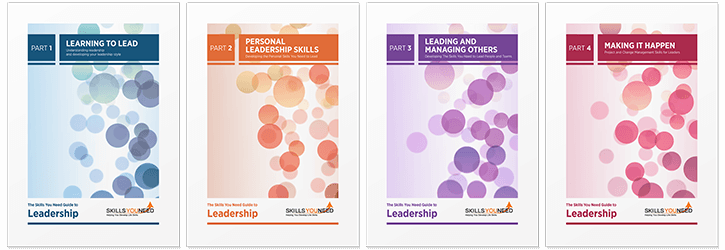14 360-degree Feedback Examples
for Assessing Soft Skills
See also: Giving and Receiving Feedback
360-degree feedback, or multi-rater feedback, is collected from colleagues, clients, managers, and subordinates alike to provide a well-rounded, objective perspective on an employee's strengths, weaknesses, and areas for improvement – hence the name alluding to a full-circle view.
The term has been around since 1940, and the method has grown into one of the best ways to create comprehensive reports without review gaps. In this article, we'll give you 360-degree feedback examples to help you express opinions about other employees as effectively and respectfully as possible.

How to collect 360 feedback
There are two ways you can collect 360-degree feedback:
Manually – Start by designing a new project in Google Forms or an alternative tool. Include questions, rating scales, and open-ended questions. Next, wisely identify raters (these should be people with a clear view of the person being reviewed) and distribute the form. You may need to send out deadline reminders. Once the raters complete the reviews, you can transfer the data into a dedicated spreadsheet for in-depth analysis.
Automatically – This process can be made much easier with reliable 360-degree feedback software like Effy AI, with features such as customizable survey questions, anonymous feedback, and comprehensive reporting. After personalizing the queries, the program will automatically send out invitations and reminders. The collected data is kept safe in a centralized database and you can later use it to generate comprehensive reports, highlighting the main strengths and areas for improvement.
360-degree feedback examples for soft skills
Traditional performance reviews are one-sided, focusing solely on the manager’s perspective, potentially leaving out many important aspects. As Branwell Moffat puts it:
“As a founder and director of KPS UK, I had the results of my first 360-degree feedback. (...) While some of the feedback was a little uncomfortable, it was all honest, and I can't really argue with any of it. There was also a lot of good stuff, but the important parts are where I need to improve.
I would strongly encourage all leaders to do this if you haven't already. To be an effective leader, you need to be strong across a broad range of competencies, and knowing where you need to improve is only going to make you better.”
For a better review process, you need to provide examples of how it's done to your employees. Without further ado, let’s dive into 360-degree feedback examples. These response samples will help you get your point across clearly while remaining empathetic.

Positive 360-degree feedback examples for soft skills
While providing feedback, be specific, focus on actionable insights, and provide real-life examples wherever possible. You can include a rating system to keep things simple (e.g., 1-5 stars), but in-depth descriptions add more value to short answers.
Communication and listening
“[Name] is an exceptional communicator who actively listens to others and articulates his thoughts with clarity and empathy. Their ability to convey complex ideas in a simple manner has greatly improved team collaboration and client relationships.”
Collaboration and teamwork
“[Name]'s collaborative nature is commendable. They consistently bring team members together, encourage diverse perspectives, and foster a sense of unity. Their dedication to achieving common goals is inspiring.”
Leadership and influence
“[Name]'s leadership style is empowering and motivating. They lead by example, inspire their team, and encourage personal growth. Their ability to influence positive change has increased team morale and productivity.”
Conflict resolution
“[Name] has a talent for resolving conflicts diplomatically. They remain calm during tense situations, actively listen to all parties, and seek win-win solutions. Their mediation skills have defused many conflicts within the team.”
Creativity and innovation
“[Name]'s creativity is a tremendous asset to the team. They consistently bring fresh ideas and encourage others to think outside the box. Their innovative thinking has resulted in numerous successful projects.”
Emotional intelligence
“[Name]'s emotional intelligence is remarkable. They demonstrate empathy and understanding towards their colleagues, which helps create a positive work environment. Their ability to perceive and manage emotions has improved team dynamics significantly.”
Problem-solving and critical thinking
“[Name] possesses excellent problem-solving skills. They approach challenges methodically, consider alternative solutions, and make well-informed decisions. Their analytical mindset has led to innovative problem-solving and improved outcomes.”
Constructive 360-feedback examples for soft skills
When delivering constructive 360-degree feedback, always act with sensitivity. Forbes’ George Bradt, an executive onboarding and transition acceleration expert, highlights the importance of focusing on a positive aspect first. Once you set up a baseline of respect, provide suggestions for growth and development – i.e., what the reviewed person should stop and start doing.
Communication and listening
“While [Name] is an effective communicator, there's room for improvement in their active listening skills. During team meetings, it would be beneficial if they could refrain from interrupting others and show more interest in their ideas.”
Collaboration and teamwork
“[Name] is a valuable team member, but they could benefit from actively seeking out the opinions of quieter team members. Encouraging more participation from all team members will foster a more inclusive and collaborative environment.”
Leadership and influence
“[Name]'s leadership potential is evident, but they should work on delegating tasks more effectively. Empowering team members will not only develop their skills but also free up their time to focus on strategic initiatives.”
Conflict resolution
“[Name] has strong conflict resolution skills, but they should practice being more assertive when addressing issues. Balancing empathy with assertiveness will help them navigate conflicts more effectively.”
Creativity and innovation
“[Name]'s creativity is valued, but they could benefit from encouraging others to share their ideas and fostering a more creative brainstorming environment. Collaboration can lead to even more innovative solutions.”
Emotional intelligence
“While [Name] is an expert in the field, they have room to grow in recognizing and managing his emotions during high-stress situations. Practicing mindfulness can help them maintain composure in challenging moments.”
Problem-solving and critical thinking
“While [Name] is a critical thinker, they tend to jump to conclusions too quickly. Encouraging them to thoroughly analyze situations before making decisions will lead to more successful problem-solving outcomes.”
Further Reading from Skills You Need
The Skills You Need Guide to Leadership eBooks
Learn more about the skills you need to be an effective leader.
Our eBooks are ideal for new and experienced leaders and are full of easy-to-follow practical information to help you to develop your leadership skills.
Conclusion
With proper implementation, thoughtful analysis, and clear communication, 360-degree feedback can be a fantastic tool for employee development, driving improvement across the whole company.
It offers several advantages over single-source feedback, including a comprehensive evaluation from multiple viewpoints and enhanced self-awareness. You can make it even more effective by making it anonymous – encouraging more candid responses, especially when addressing sensitive issues.
A 360 feedback tool for automated reviewing processes helps to streamline the entire process, with 64% of HR professionals agreeing that automated feedback tools positively impact employee motivation. It saves time otherwise spent on data collection and analysis, allowing HR professionals and managers to focus on providing meaningful feedback and supporting employee development.

About the Author
Andrew Makhovskyi is the CEO and co-founder of Effy AI, a 360 feedback and performance review software that is changing the way managers work and run employee reviews.


